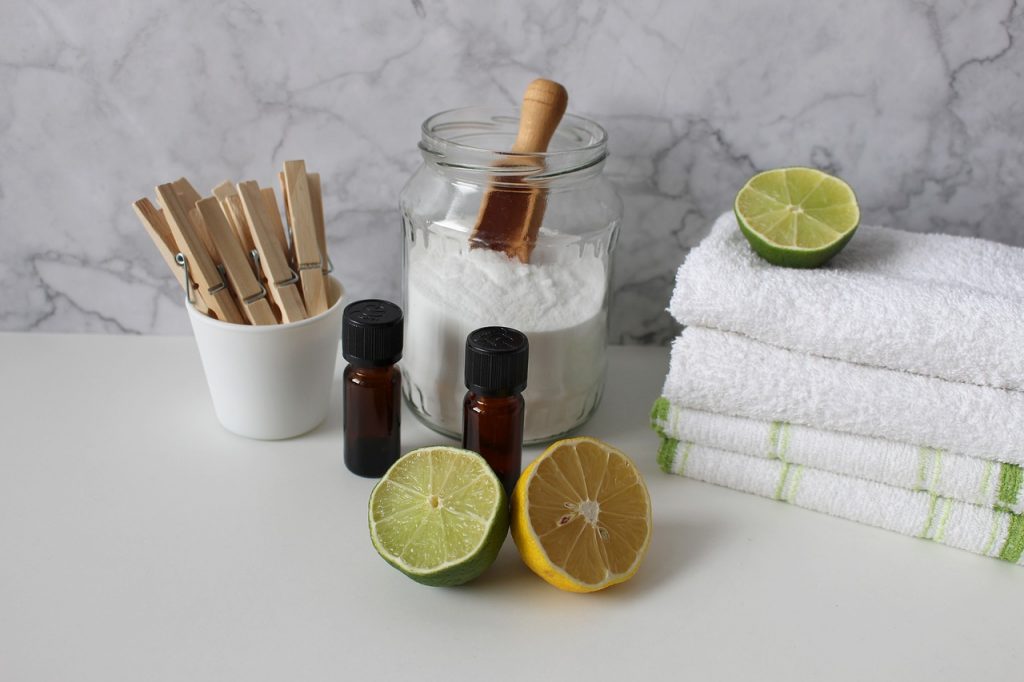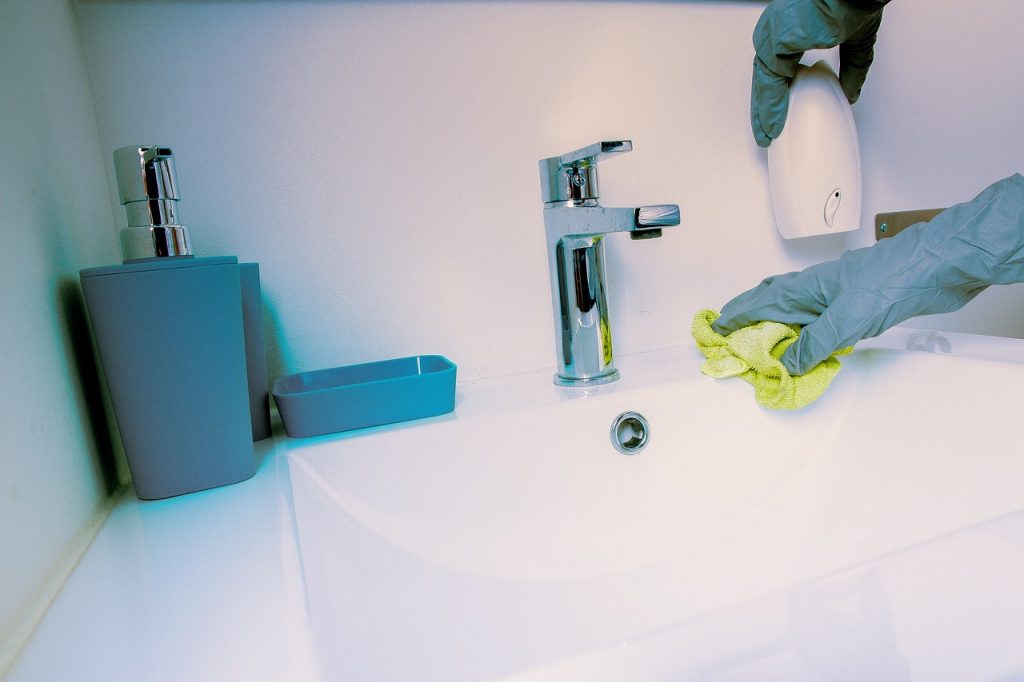Lemon juice or citric acid, vinegar, cola-cola and baking soda are proven weapons in the fight against limescale in the bathroom. There is no need to use harmful chemicals.
On the sink and faucet, in the shower tray, in the bathtub, on the shower door, on the shower head, in the toilet and on the tiles – these are the places where unsightly limescale accumulates in the bathroom. This is nothing but a deposit formed by hard water with a high content of magnesium and calcium salts, where under the influence of high temperature (which is not lacking in the bathroom) calcium carbonate precipitates.
It builds up every day and not only looks bad, but can also clog the holes in both the shower handset and the faucet aerator, weakening the water pressure.
>> See also: How to clean the oven?
There are many ways to quickly and easily get rid of scale in the bathroom. We present the best of them (and cheap!), omitting, of course, the use of special chemicals, which are not necessarily good for our body and even less for the environment.
We would also like to remind you that it is best to clean bathroom fittings on a regular basis as it is definitely more difficult to deal with a thicker layer of accumulated scale. Sometimes scale removal in the bathroom has to be repeated several times to achieve the desired effect.
Lemon perfectly deals with various problems such as: dirty oven, cutting board, kettle, joints or unpleasant smell in the fridge. We have yet another solution for it – lemon juice or citric acid effectively remove limescale in the bathroom. They can be safely used for stubborn deposits on enamel surfaces, all kinds of stains and grease.
If you want to increase their effectiveness, mix them with baking soda or salt.
Simply apply the squeezed lemon juice to the desired area and leave for an hour. After this time, just rinse everything off and wipe with a dry cloth. Moreover, lemon leaves behind a pleasant smell.

Vinegar is also well known for its cleaning properties. All you need to do is pour it on the surface covered with limescale and wait for at least an hour.
There are places, such as a faucet, where in addition to scale deposits, we also have soap deposits. Then, to get rid of them, it is worth making a vinegar compress – wrap the faucet with a cloth soaked in vinegar (or a 1:1 mixture of water and vinegar), or tie it with a string to make it adhere better to the surface. After a few hours, wash it and wipe dry.
Vinegar can also be used to remove limescale from the shower head. Just put it in a pot and boil for 15-20 minutes in a bath of 100 ml of water and 100 ml of vinegar.
We also suggest combining the power of lemon, vinegar and water to make a homemade descaling agent which you can easily spray on your bathroom tiles or shower door.
When it comes to the shower tray or bathtub, it is best to pour vinegar on it and then sprinkle acid or lemon juice on it. Leave it overnight and wash with warm water in the morning.

Popular coca-cola is not only good for drinking, but also for removing grease, rust and scale from various surfaces. It is able to get rid of even a very thick layer of sediment in the toilet. Just pour a glass of the drink into the toilet bowl and let it sit for an hour or two, and after that time, scrub thoroughly and rinse with water.
Finally, there is baking soda, which is great for dealing with any stains, odors or limescale.
Sprinkle baking soda on the limescale spot and add a small amount of water. After an hour, clean everything with a toothbrush. Such a paste will be ideal for dirty tiles or grout.
Baking soda works even stronger when combined with vinegar. For example, after spraying the shower door with vinegar, you can additionally wipe the entire surface with a baking soda sponge.